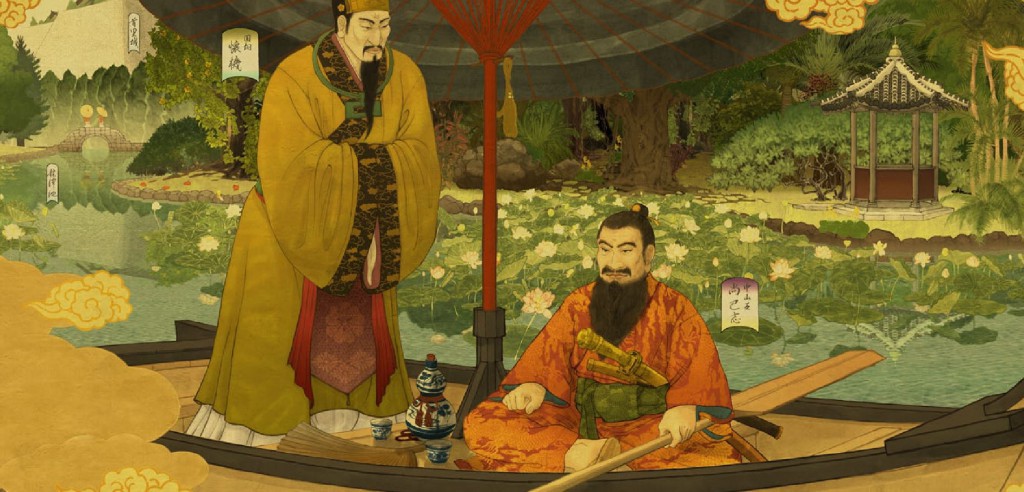Compared to other Chinese overseas merchant communities in Southeast Asia, which were more economically successful, the people of Kumemura were more successful in culture and administration, which is considered to be due to the state stipends and privileges provided to them by the Ryūkyū kingdom, which made them similar in status to the Shuri nobility.[1] Because of this from the outset both Ryūkyūan government and the Chinese immigrants themselves had reason to regulate and limit additional influx of people. Besides, due to the maritime ban Chinese coastal inhabitants were prohibited to travel overseas. In light of this, the term “36 Families” is probably just an euphemism for a legal exception for this ban granted by the Chinese imperial government.
In the “Annals of the Ming Dynasty”[2] the same term “36 Families” appears for the first time only for the year 1608, when King Shō Nei unsuccessfully applied to the Chinese Emperor to once again send such “36 Families” from Fujian as tribute envoys, interpreters, seamen etc. to Ryūkyū.[3] Was this in connection with the invasion plans of the Shimazu? And if so, what service would Shō Nei have expected from mariners and administrators? This might indicate that the “36 Families” also included specialists in the military arts.[4] In any case, the term “36 Families” was used like this for the first time in 1608. It is a retrospective and euphemistic designation.
 There were also a number of Chinese persons noted in official documents of which it is not sure whether they belonged to the “36 Families” or other Chinese groups. During the 1st Dynasty of the Royal Shō Clan, services of Chinese people were sought by the Ryūkyūan government for the management not only of trade but of general government affairs as well. One example is a Chinese named Ōmō who served as Minister of State to the dynasty’s forefather Shishō and who had ties to Taoist circles in China. Another Chinese was Kaiki, who served as royal Minister of State from 2nd generation Shō Hashi to 5th generation Shō Kinfuku. Both of them are not considered members of the “36 Families,” but both deeply participated in national politics and diplomacy on the very highest level, which is an interesting point.
There were also a number of Chinese persons noted in official documents of which it is not sure whether they belonged to the “36 Families” or other Chinese groups. During the 1st Dynasty of the Royal Shō Clan, services of Chinese people were sought by the Ryūkyūan government for the management not only of trade but of general government affairs as well. One example is a Chinese named Ōmō who served as Minister of State to the dynasty’s forefather Shishō and who had ties to Taoist circles in China. Another Chinese was Kaiki, who served as royal Minister of State from 2nd generation Shō Hashi to 5th generation Shō Kinfuku. Both of them are not considered members of the “36 Families,” but both deeply participated in national politics and diplomacy on the very highest level, which is an interesting point.

Kaiki and Sho Hashi.
[1] Möller 1991: 47. – Matsuda 1966: 280-81. Theory by Higaonna Kanjun, in Ryūkyū no Rekishi, Tōkyō, 1957, pp. 43-46, backed by Ogaeri Yoshio, “Ryūkyū koji-shō“, Part 2, in: Kokoro 心, December 1951, p. 31..
[2] Ming Shilu 明實錄.
[3] Möller 1991: 44.
[4] Higaonna Morio (Vol. I., 1985, p. 18.) gave the following hint, yet, like the most Karate authors, without giving any historical source: “The Chinese, who had settled in Kume, also taught Chinese Kempō to the villagers. Some of the delegates belonging to the Okinawan nobility, traveled to China, remained there for some time and even enrolled in Chinese Kempō schools for study. At that time the Okinawan King established Ryūkyū settlement [Ryūkyūkan] in Fujian Province [southern China], to accommodate the Okinawans who went to China for cultural exchange.”
© 2015, Andreas Quast. All rights reserved.
